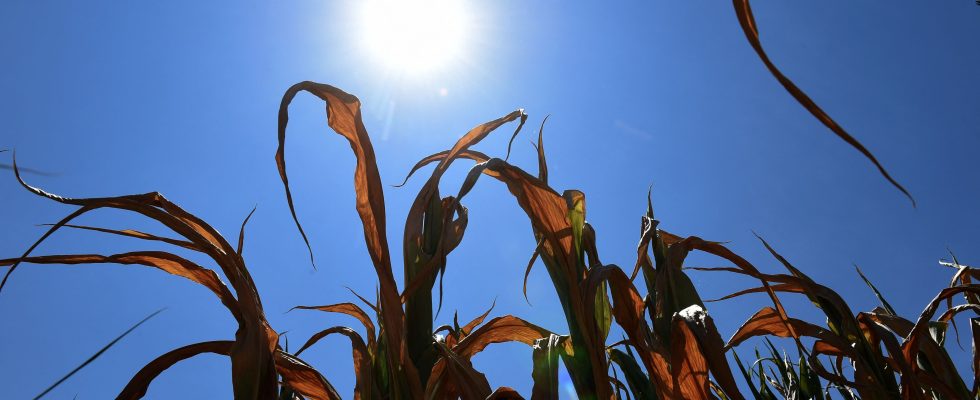Between a region affected by flooding and another affected by historic drought, there are only a thousand kilometers. Paradoxical and striking effect of an ever more disrupted climate, and growing tensions on the country’s water resources. Each summer now imposes its debate on its uses and access, while the sometimes torrential rains of winter ravage certain territories. How can France adapt to this new reality? L’Express wanted to contribute to a debate that is more necessary than ever. These six “black scenarios” for water by 2030 are the translation. They are neither forecasts nor predictions. But hypotheses on which public and industrial authorities are already working more or less directly, and whose frameworks have been refined and enriched by the forty experts interviewed: researchers, meteorologists, senior civil servants, engineers, insurers… All are unanimous: the The country’s resilience in the face of these events is being built now.
EPISODE 1 – March 2026, the 100-year flood of the Seine devastates Paris: our dark water scenarios
EPISODE 2 – August 2027, a mega-fire in Hérault: the worrying hypothesis of an “overrun”
EPISODE 3 – January 2026: a dangerous weather cocktail savagely hits the north of France
This is the new reality. That of the never-ending heightened alert or crisis levels and the restrictive measures that drag on, prohibiting non-priority water withdrawals. For four years, the Rhône valley has been experiencing an unprecedented situation of prolonged drought. In the summer of 2029, it becomes alarming. The river is the source of multiple activities (agriculture, portable water, navigation, electricity production), crucial for the economy. The backbone of an entire corner of France that climate change is putting under pressure. We share water when it is abundant, but also (and especially) when it is less abundant. Conflicts of use increase as a result.
According to projections from the Rhône Méditerranée Corsica Water Agency, the average annual flow of the Rhône would remain approximately the same by 2050, but with an exacerbated “seasonality”. However, climate variability has played a major role in recent years: winter rainfall has not been able – by far – to compensate for the lack of summer water. “If we start with a deficit winter, then continue with a dry spring and a scorching summer, we are facing big problems,” confirms Nicolas Kraak, director of the Rhône Mixed Agricultural Hydraulic Union (SMHAR).
In the Lyonnais mountains, breeders can no longer water their cows and goats. The entire agricultural profession in the basin – 240,000 hectares, the size of Luxembourg, are irrigated with this water – is asked to drastically limit its consumption. Those who pump into groundwater face severe restrictions. The authorities are even considering it for groups of owners who draw directly from the river. An unprecedented measure. Farms in the south of the valley are the most vulnerable, such as those connected to the tributaries of the Durance or the Drôme in a critical state. Downstream of the Rhône, at Beaucaire (Gard), the low flow – that is to say minimum – is the lowest ever recorded. A new record falls.
“A real point of weakness in the territory”
Such a drought is reminiscent of the dramatic year 1921. A century later, in 2029, the Compagnie nationale du Rhône (CNR) has never been so close to the limit of flows reserved for biodiversity. Hydroelectricity production on this river domesticated by man, dotted with numerous dams, is down 40% in the middle of summer. Much worse than in 2022 (-12% over the whole year), “where sometimes only one group operated per factory”, recalls Eric Divet, water resources director at CNR.
The nuclear industry – 14 reactors, 20% of national production – must also modulate its activity. Because the lower the river flow, the higher the water temperature rises, especially if the heatwave is involved. Power plants that draw from the Rhône to cool their reactors cannot reject overheated water. “It’s a reduction in production for the benefit of the environment. Almost all energy players are aware of this,” explains Cécile Laugier, environment and forecasting director for EDF’s nuclear fleet. It is temporary, but cuts up to 2% of production.
In Saintes-Maries-de-la-Mer (Bouches-du-Rhône), drinking water is lacking. The low level of the Petit Rhône causes a significant upwelling of sea water in the river delta. Too salty to drink from the tap. In the capital of the Camargue, this protected natural setting, more than 40,000 people were supplied by tanker trucks during a record period. “It’s a real point of weakness in the territory,” agrees a local official. “We try to manage daily life well, but we struggle to project ourselves into this kind of scenario.” The historic rise of the “salty corner” and the critical levels of water tables are worrying the urban areas of Arles and Nîmes. And sadden the wine growers and rice growers, who lost their crops because of the salinity of the soil.
.
